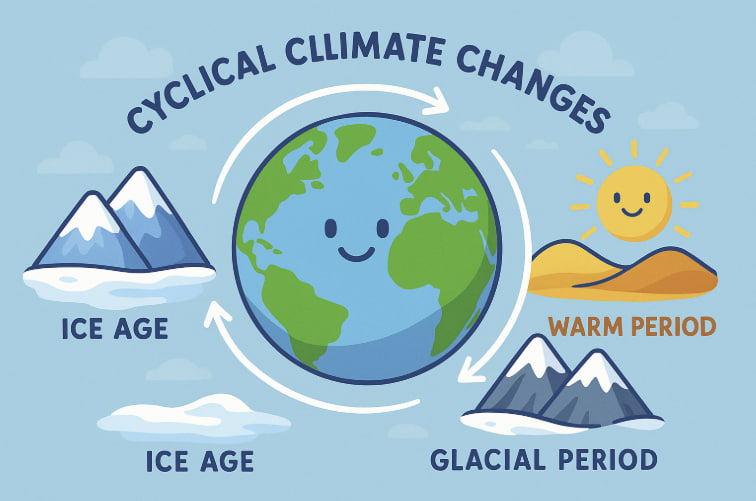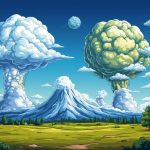Climate change is often associated with human activity in the modern era, but long before the Industrial Revolution, Earth experienced natural climate cycles driven by astronomical, geological, and biological forces. These cyclical changes have shaped the planet’s ecosystems, ice ages, and even the evolution of life. Understanding these patterns helps us distinguish between natural climate variability and human-induced global warming.
What Are Climate Cycles?
Climate cycles are long-term, naturally recurring changes in Earth’s temperature, precipitation, and atmospheric composition. They can last from decades to hundreds of thousands of years and are caused by a variety of factors, including:
- Changes in Earth’s orbit and axial tilt
- Fluctuations in solar activity
- Volcanic eruptions
- Oceanic and atmospheric circulation patterns
These cycles don’t act in isolation. Often, multiple forces interact, amplifying or dampening climate effects.
Major Natural Climate Cycles
1. Milankovitch Cycles
Named after Serbian scientist Milutin Milankovitch, these are slow changes in Earth’s orbital characteristics:
- Eccentricity — shape of Earth’s orbit around the Sun (100,000-year cycle)
- Obliquity — tilt of Earth’s axis (41,000-year cycle)
- Precession — wobble of Earth’s axis (26,000-year cycle)
These variations change the distribution of sunlight on Earth, triggering ice ages and interglacial periods.
2. Solar Cycles
The Sun goes through an approximately 11-year cycle of varying activity. During periods of high activity, more solar radiation and sunspots are observed, which can slightly warm Earth’s climate.
3. El Niño–Southern Oscillation (ENSO)
This cycle occurs every 2 to 7 years and involves changes in ocean temperatures in the equatorial Pacific. It affects global weather patterns:
- El Niño brings warmer global temperatures, droughts, and floods
- La Niña brings cooler temperatures and stronger monsoons in some regions
4. Volcanic Activity
Large volcanic eruptions can cool the planet for a few years by ejecting aerosols into the stratosphere, which reflect sunlight away from Earth.
Historical Examples of Climate Cycles
- Ice Ages — The last glacial maximum occurred about 20,000 years ago. We are currently in an interglacial period called the Holocene, which began about 11,700 years ago.
- Medieval Warm Period (900–1300 AD) — A time of mild warming in parts of the Northern Hemisphere
- Little Ice Age (1300–1850 AD) — A period of cooling, especially in Europe and North America
These events were largely driven by combinations of solar and volcanic activity, and changes in ocean circulation.
Glossary
- Milankovitch cycles — Long-term changes in Earth’s orbit and tilt that affect climate
- El Niño — A warming phase of ocean temperatures in the central Pacific
- Volcanic aerosols — Tiny particles from eruptions that reflect sunlight and cool the planet
- Glacial period — A cold era when ice sheets cover large parts of the Earth
- Interglacial — A warmer period between glacial episodes


